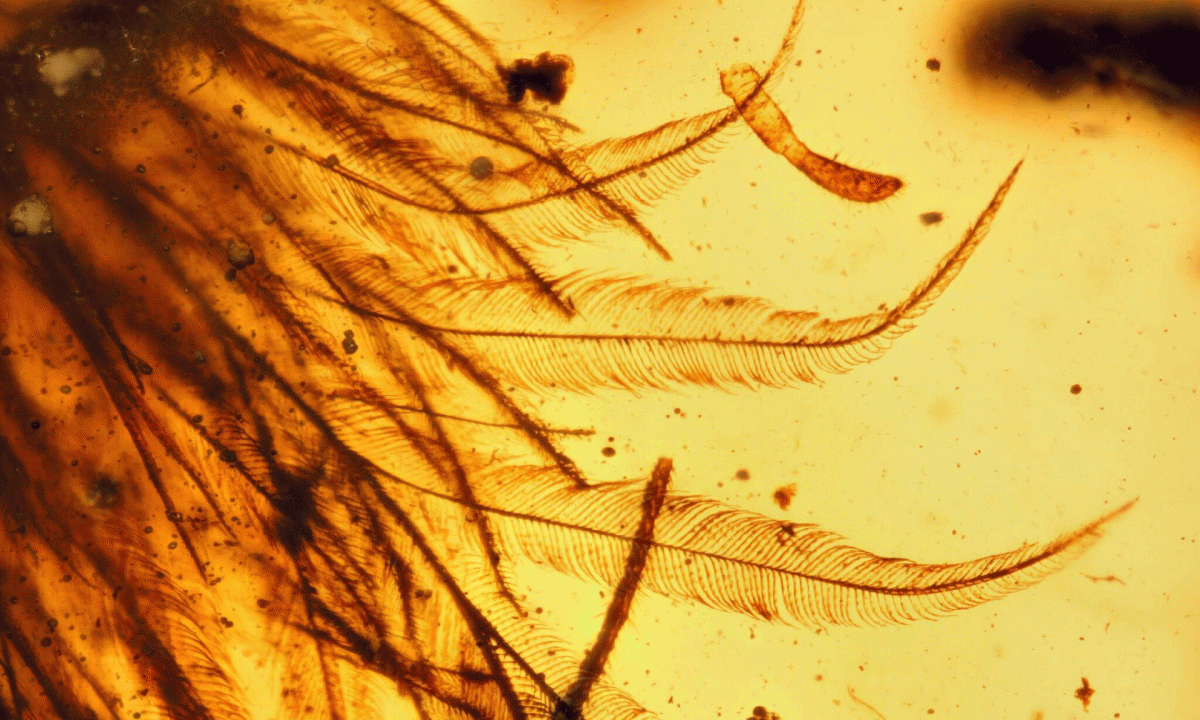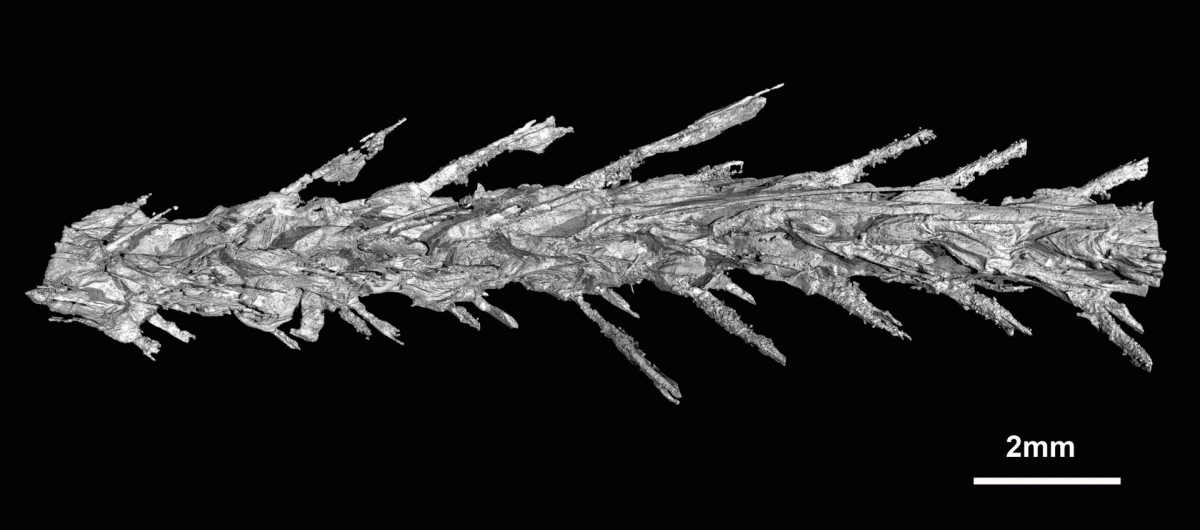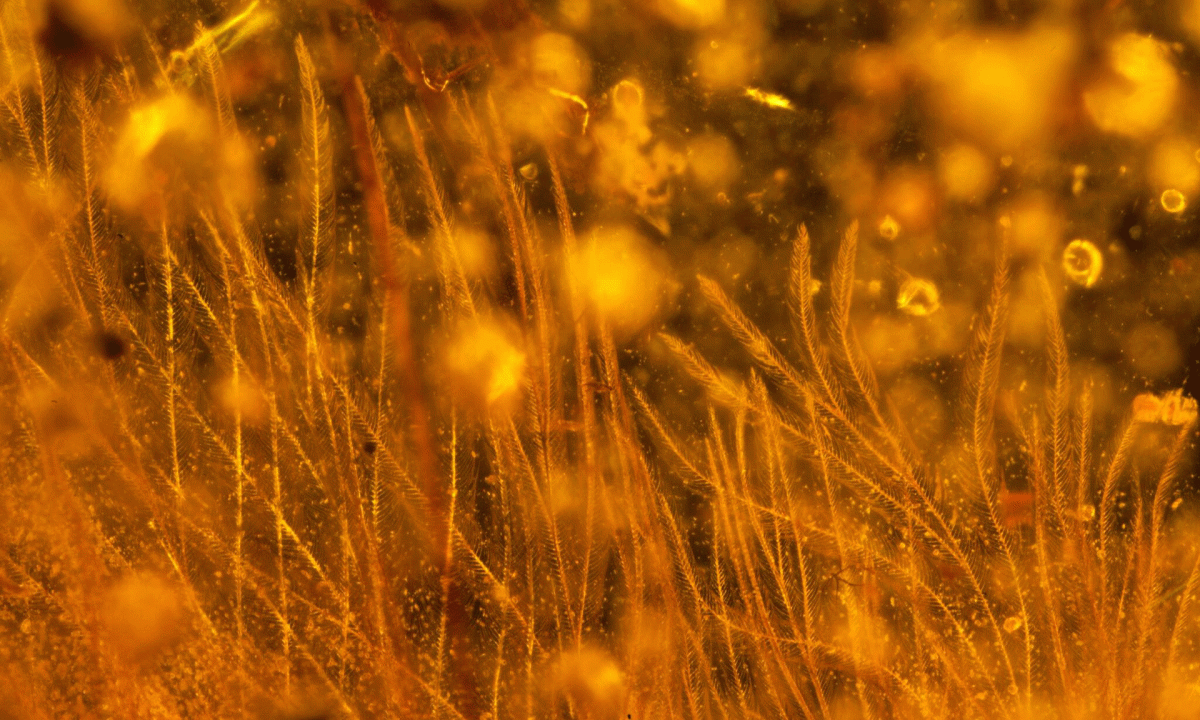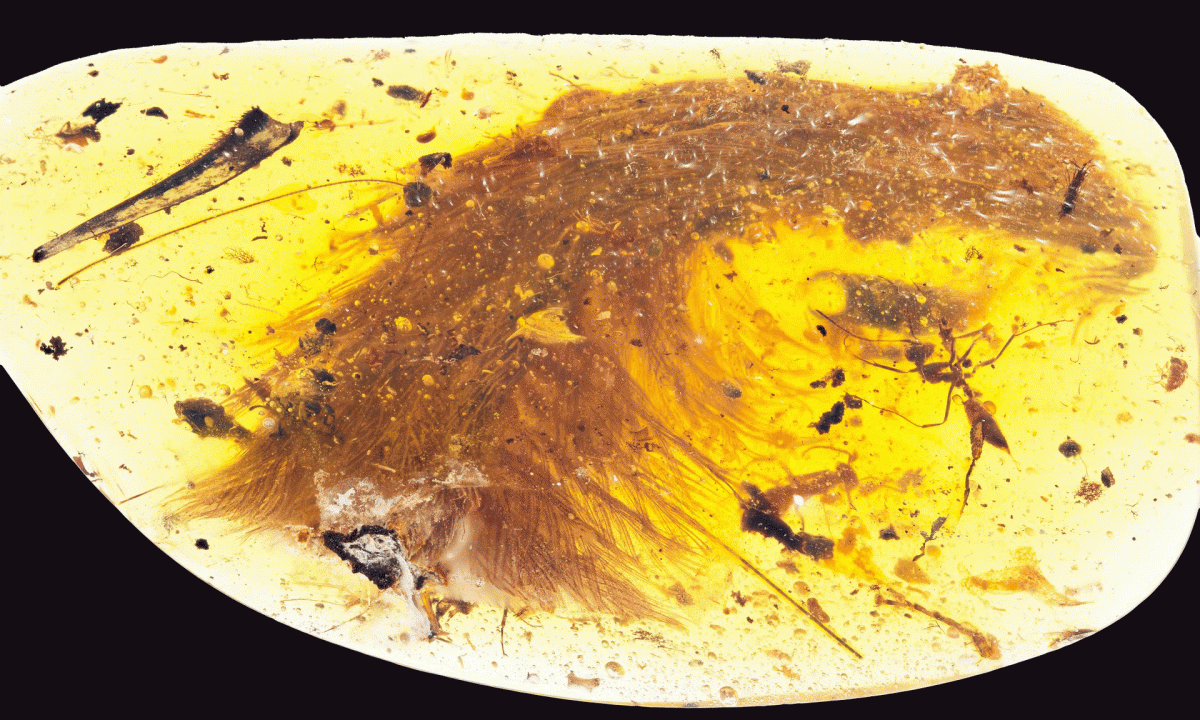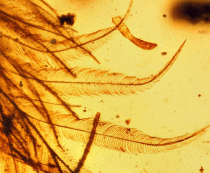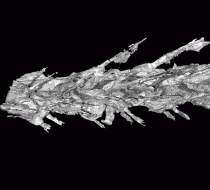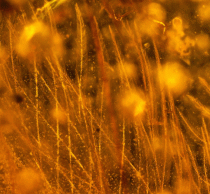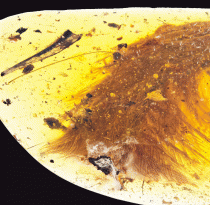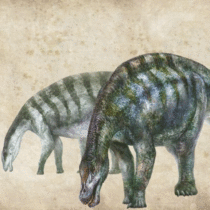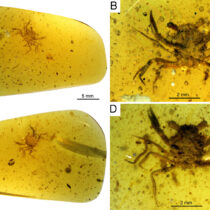Fossil preserved in amber from Myanmar is the tail of a feathered dinosaur, a study finds. The specimen was discovered in an amber market in Myitkina by the study’s first author Lida Xing from the China University of Geosciences in Beijing. The amber which is 99 million years old had been polished to be used for jewellery and was intended for sale by someone who thought it contained some sort of plant. Closer examination of the item, however, indicated that it was the tail of a feathered dinosaur, a non-avian theropod, approximately the size of a sparrow.
The feathers of the tail were chestnut brown on top and white on the underside. It is around 3.7 cm long and complete with fossilised bones, traces of muscles, ligaments and traces of skin. Tracking the amber miner who first excavated the piece of amber also helped scientists define the location from which it came, Kachin State, in north-eastern Myanmar.
Co-author Ryan McKellar, of the Royal Saskatchewan Museum in Canada, said that although many specimens preserved in amber possibly coming from dinosaurs have been found in the past this is the first time it is undoubtedly dinosaur material that has been found. Scientists are sure that it was a dinosaur due to the vertebrae which are not fused into a rod or pygostyle, as in modern birds. Dr McKellar added that there are signs the dinosaur contained fluids when it was incorporated into the resin that eventually formed the amber.
Co-author Professor Mike Benton from the University of Bristol added that the details of the dinosaur tail are amazing.
The study was published by scientists from China, Canada and Bristol in the journal Current Biology and scientists are excited about the insight it will provide. It will help them identify the arrangement of feathers on these dinosaurs, thanks to the 3D features it contains. Dr Paul Barrett from London’s Natural History Museum said that this particular feature, the 3D arrangement of feathers in a Mesozoic dinosaur/bird is a unique and rare occurrence, since most other similar fossils found so fare were flattened.
But the significance of the discovery also lies in the fact that not only it will help scientists reconstruct the creature’s appearance, but also gain fresh insights into the evolution of feathers.
